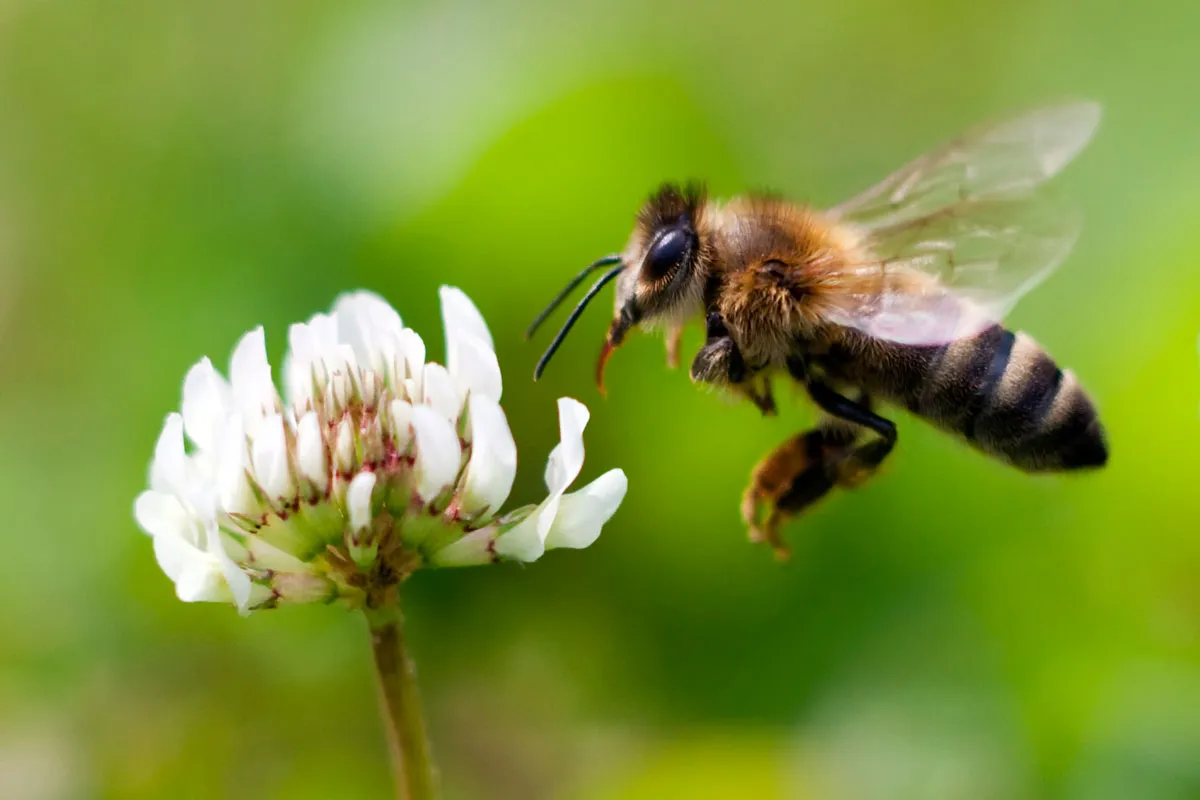Honeybees have less to feed on in the countryside than their counterparts in cities, a study found earlier this week.
By analysing the waggle dance of 2,827 honeybees in London and Kent, researchers from Royal Holloway University and Virginia Tech have found that bees in agricultural areas have further to travel for food than those in urban areas.
The London bees had an average foraging distance of 492 metres, whereas the rural bees travelled an average of 743 metres. Study author Professor Elli Leadbeater said the results would be a surprise for many.
“You think of the countryside as having more flowers, but cities have a greater diversity of flowers because gardeners plant for continuous flowering from the spring to the autumn. Yes there are hedgerows in the countryside, but pre-war, the country had huge meadows and smaller farms with more diversity. Now we have crops that flower like fruit orchards or oil seed rape and they last for a limited number of weeks – so it’s boom and bust.”

The team analysed the movements of bees in 10 observation hives in central London and 10 across farmland in Kent, Surrey and the home counties between April and September 2017.
When honeybees return to a hive they perform a dance called a waggle dance which tells other bees which direction and distance they should travel to find food. By decoding these dances and analysing regurgitated nectar, the researchers also ruled out the possibility that honeybees in the countryside were travelling further to find better quality sugar.
“We thought they might be flying further for greater resources but we looked at the nectar they were collecting and they were finding the same stuff but having to go further for it,” said Professor Leadbeater. She added that the findings, published in the British Ecological Society’s Journal of Applied Ecology, were a positive sign for urban beekeepers and gardeners, but concerning for farmers and food production.
“In hedgerows there are a lot of flowering trees, like hawthorn and buckthorn, and that’s something some farmers do to help bees – fill hedges with flowering species and plant wildflower margins on the edge of the fields. But at the moment, it’s not enough. We need to increase the consistency of forage available across the season.”
The Department for Environment, Food and Rural Affairs (DEFRA) this week published the first step of its 2030 Healthy Bees Plan for England and Wales, aimed at protecting and enhancing populations of honeybees. That primarily targets improving the way honeybees are looked after, however Professor Leadbeater said her team wanted to make the countryside a better environment for all bees.
Honeybees continue to face pressure from a variety of pests, diseases and environmental threats. They are just one of many species of pollinator in the UK, alongside 26 species of bumble bee, over 250 species of solitary bee and hundreds of types of hoverflies, butterflies and moths.
It’s estimated that the combined pollination value of all those species groups to crop production in the UK is over half a billion pounds each year, based on yield.
